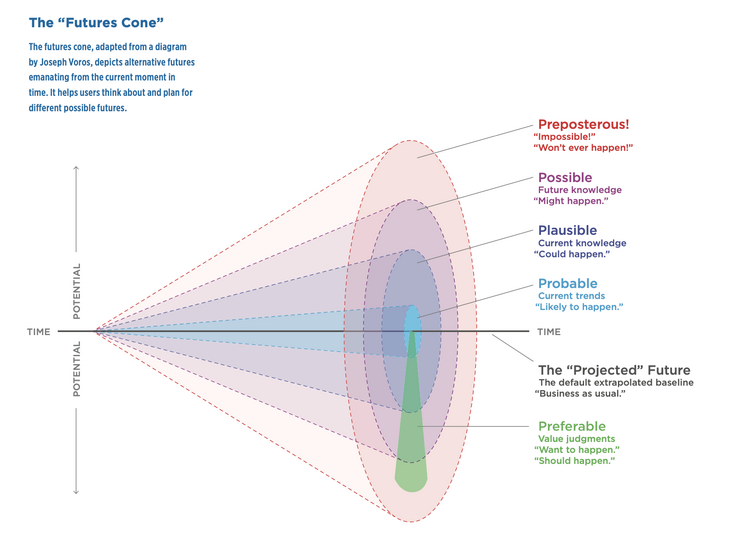Transit operators can control many aspects of the services they provide, and local, regional, and state policy can do much to shape the environment in which these operators do business. But other highly influential forces — global pandemics, surging inflation, new technologies, and national political swings — remain fully outside of what advocates, transit operators, or local and state governments can reasonably expect to influence.
Of the many uncertainties regarding the Bay Area transit system’s future, the long impact of the COVID-19 pandemic on transit ridership and operator finances looms largest. Despite significant ridership recovery, Bay Area operators now earn nearly $500 million less in fares than they did in 2019, while the overall cost of providing current service levels has continued to grow. A roughly $700 million annual operating gap is expected by 2026. Because funding shortfalls are concentrated among the region’s largest operators, more than 80% of all transit riders in the Bay Area could face seriously degraded service levels. Leaders throughout the region are working on a potential 2026 ballot measure to bring new investment to sustain and transform transit, but in any scenario, funding unknowns will persist for at least another two years.
The upcoming federal election is another source of significant uncertainty. Shifts in the party controlling the White House or Congress could signal sustained or even growing federal investment in transit or a sharp curtailment of grants and spending, with implications particularly for projects like BART’s extension to San José and the Portal rail extension to downtown San Francisco. These long-standing regional priorities have been promised more than $8 billion in federal funding, but that funding is contingent on the completion of grant agreements and requires discretionary action by the federal government. Other envisioned mega projects, like the California High Speed Rail system, face similar financial and political uncertainties at an arguably even greater scale.
Beyond these immediate unknowns, transit must confront larger questions. How will travel and land use patterns continue their post- pandemic evolution? What will autonomous vehicles mean for transit? How will the region’s shifting demographics change transit’s customer base and workforce? Analysis and expert discussion can provide insights, but there is simply no certainty about how the future will actually unfold.
Reimagining the Future of Bay Area Transit
SPUR has long advocated for a robust, well-coordinated transit system as an essential part of an equitable, sustainable, and prosperous region. So, how is SPUR reimagining the future of Bay Area transit, and our work, in a moment of uncertainty?
First, we are more explicitly addressing the unknown with tools such as scenario planning. Acknowledging multiple possible futures is a way to develop robust plans and to think critically about the region and the state’s current projects and priorities. Raising the hundreds of millions of dollars in funding needed to sustain and transform transit operators, for example, is both critically important to the region and plausibly achievable in a variety of potential futures. California’s goal of quadrupling transit ridership by 2040, on the other hand, can only be realized in a future with massive and rapid changes to transit funding levels, labor availability, and public behavior. Is this future probable? Is it plausible?

Second, we are refocusing on the core business — the aspects of the transit system over which operators and policymakers can exercise the greatest degree of control. This effort starts with improving the customer experience. Adapting to new rider patterns and markets and making transit faster, more frequent, and more reliable as well as clean, safe, and easy to use are essential strategies for transit in all scenarios.
Bay Area operators are making real progress on this front. After restructuring many lines and making many speed and reliability improvements, Muni has earned its highest customer satisfaction rating since 2001. BART has adapted its service to better meet the needs of an all-day market and is accelerating fare gate replacements to improve security and safety. This fall, Caltrain is launching its electrified system that will provide faster, more frequent, and more comfortable trains. At the regional level, a new network management structure administered by the Metropolitan Transportation Commission is making steady progress on coordinating fares, wayfinding, and other aspects of the transit system that can facilitate a more seamless customer experience.
Focusing on the core business of transit also means addressing funding needs and building the government’s capacity to deliver. As pandemic relief funding runs out, securing additional public resources to support and ultimately grow the system is critical. New funding, how- ever, is not enough: transit operators and policymakers must also build public confidence by consistently showing that the system can deliver results and use resources efficiently. This means finding ways to hire needed operators, speeding the deployment of key customer improvements and continuing efforts to deliver capital projects more quickly and cost effectively. It also means maintaining a real, transparent focus on basic cost and productivity metrics — the cost of service per hour or mile, the amount of public subsidy required per passenger served, and the rate at which transit costs are increasing relative to inflation.
Overthinking the unknown can be paralyzing. It doesn’t need to be. By acknowledging uncertainty and refocusing on the fundamentals of the business, transit operators, elected officials, and advocates can make wise choices, build public trust, and help steer the Bay Area’s transit system into the future — whatever it may be.✹

